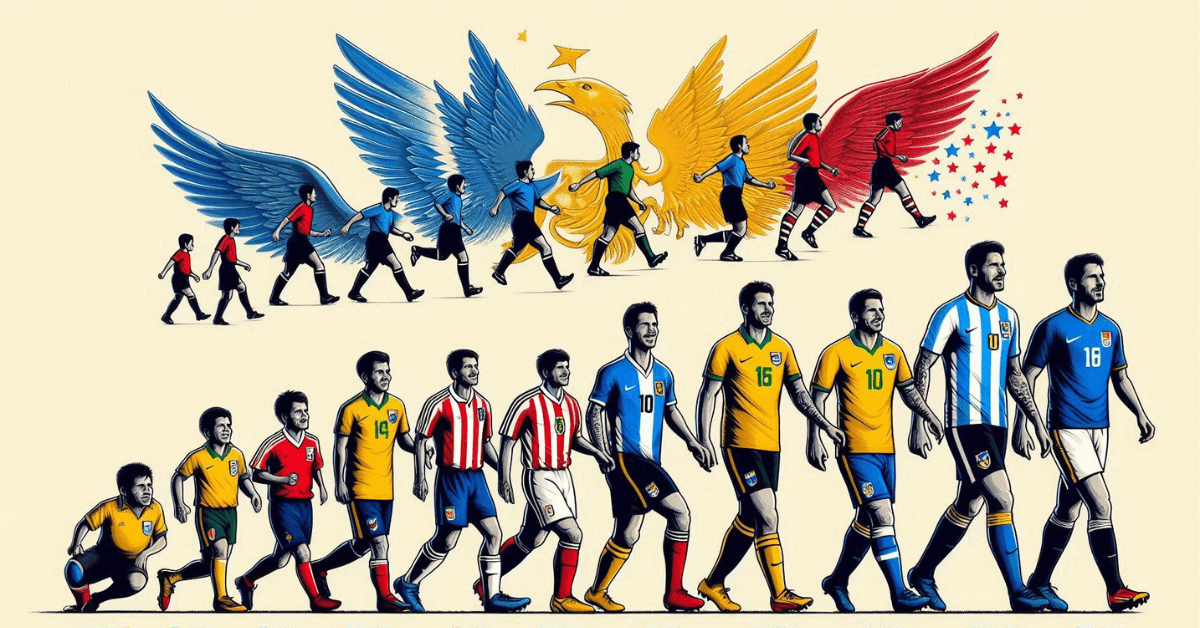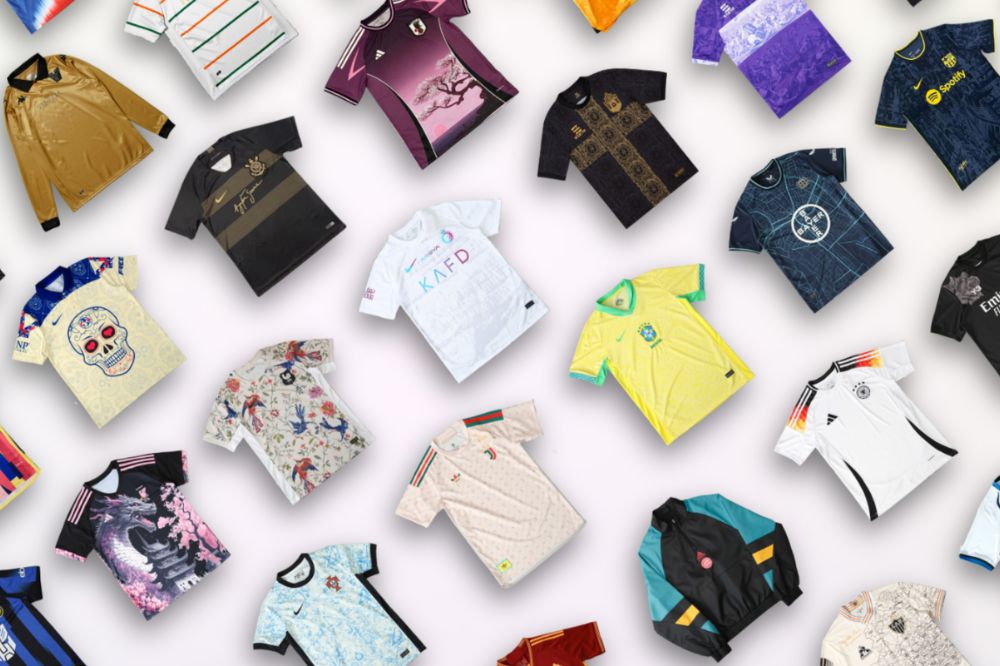Eduardo Galeano, a renowned Uruguayan writer and journalist, was always right when he said that football speaks for a region's cultural history. And, so, when there is a ball under the player's foot and the nation's colours painted on the chest of the national team shirt, they march off to the goal with a sense of confidence and glory. He says there is no doubt that the national football uniform is the symbol of identity for the countries known for their soccer. He mentioned that shirts form a major part of your pride and culture.
Ever since South Americans started playing football, designers have constantly adapted to the local culture and heritage in designing the best shirts. The aim is to create a piece of clothing that captivates the journey of the sport, identity, and culture. Whether it be the humble early days or the current victories, these national team football shirts capture the spirit of the nation and its people.
This blog discusses the journey mapped by these team shirts throughout South America's history and cultural heritage.
The Initial Years of the Sport: 1900s to 1940s
After beginning in the late nineteenth century, it was finally in the twentieth century that football got its recognition amongst the masses of South America. All credit goes to the sport's popularity amongst the younger generations internationally. This demanded an identity for each team, so people could support their favourite ones.
Initially, the football shirts were simple and made of pure cotton fabrics. For instance, the earlier Argentina shirts and shorts were pure white with no design. Immediately after, these shirts were replaced by the white and sky blue striped shirts inspired by the national flag. Uruguay started with a light blue shirt called the 'La Celeste'.
Fabric: Heavy cotton was used, but it was not a breathable fabric.
Design: Simple designs that focus only on the fulfilment of the purpose of team recognition.
Colour: National colours are used to represent their countries.
The Golden Period of Recognition: 1940s to 1970s
It was these years, when football became a trending topic of discussion amongst the world. The 1940s marked the beginning of South American football gaining popularity. The FIFA world cup showcased all the respective national football team shirts of all countries on the stage. During these times, teams started opening competitions and contests where people from their countries could design their respective jerseys for the countries.
In 1954, Brazil introduced a yellow shirt with green trim at the neck area. This piece was synonymous with their success in football. In between the 1950s and 1960s, there were advancements in textile manufacturing techniques and design technology. This allowed better and lighter fabrics that were more comfortable during the sweating game sessions.
Fabric: Advanced manufacturing technology helped with the production of lighter fabrics for shirts.
Design: There were much more vibrant and better designs printed on the shirt with more precision than before.
Colour: Argentina chose to stay with white and blue striped shirts, while Brazil replaced white shirts and blue-collar shirts with yellow shirts and green trim on the neck area.
Modern Times: 1970s to 1990s
The late 20th century saw a few more changes in shirt design. The introduction of synthetic fabric shifted sportswear quality, making jerseys lighter and more durable. They had become as light and comfortable as a feather with their moisture-wicking properties. Along with technology, many reputed brands also started flowing in to design national kits for different teams.
The Colombian bright yellow shirt happened to emerge as a symbol of pride during this time. Apart from this, the red shirt of Peru with white stripes also became iconic during their victory in Copa America (1975).
Fabric: Synthetic material is used to make football shirts that are better performing.
Design: Graphic cuts and bold designs should be included on the national team football shirts.
Colour: Peru chose a red shirt with white stripes, and Colombia chose a bright yellow shirt.
The Present Era: 2000s to Today
In the current milieu, the team shirts are created with the incorporation of both techniques and cultural heritage, thanks to technological advancements. For example, Argentina has recently added references of its culture in the shirt via patterns and fabric. Added to this, there is a focus on sustainability and environment.
Fabric: Sustainable materials are preferred.
Design: Addition of cultural designs and aesthetics.
Colour: Retain the national colours with better design techniques.
National Football Team Shirts - Reflect South America's Journey to Present
The voyage that football shirts have traversed in South America is similar to its country's evolution. From beginning to end, there have been plenty of changes and developments in the shirt's existence. For a football fan, these shirts mean their identity with the team and their love for the nation.
False9Fits brings you a range of shirts that represent your favourite football team. We are a team of football enthusiasts who understand your love and devotion for the sport, it is why we combine quality and heritage for you. Pick your dream shirt and add to the cart to purchase your order!



Leave a comment
This site is protected by hCaptcha and the hCaptcha Privacy Policy and Terms of Service apply.